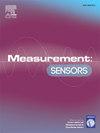Status of the kilogram realisation using the XRCD method at PTB
Q4 Engineering
引用次数: 0
Abstract
Since the establishment of the revised SI the unit of mass, the kilogram, can be realised by two primary methods based on Planck's constant - the “Kibble balances” and the “XRCD” method (X-ray crystal density). The XRCD method is based on a high-quality characterisation of spheres made of isotopically enriched 28Si silicon, which can be divided into two main activities, the determination of crystal/material parameters and the determination of the macroscopic volume of 28Si spheres and their surface layers. This subdivision is of particular interest since the material parameters are considered constant and are not re-determined when the realisation is “reactivated”. Before and after the redefinition of the kilogram, comparisons of the most accurate realisation experiments were carried out. This publication discusses the parameters, methodology and instrumentation used by PTB for the participation in CCM.R-kg-P1 (Pilot Study) before redefinition in comparison to the results of the experiments for the participation in CCM.M-K8.2019 and CCM.M-K8.2021 after redefinition.
PTB使用XRCD方法实现千克的现状
自从修订的国际单位制建立以来,质量单位千克可以通过基于普朗克常数的两种主要方法来实现——“基布尔天平”和“XRCD”方法(x射线晶体密度)。XRCD方法是建立在对同位素富集的28Si硅球进行高质量表征的基础上的,该方法可分为两个主要活动,即晶体/材料参数的测定和28Si球及其表面层宏观体积的测定。这种细分是特别有趣的,因为材料参数被认为是恒定的,并且在实现“重新激活”时不会重新确定。在千克重新定义之前和之后,对最精确的实现实验进行了比较。本出版物讨论了PTB参与CCM所使用的参数、方法和仪器。R-kg-P1(先导研究)与参与CCM.M-K8.2019和CCM.M-K8.2021的实验结果进行比较。
本文章由计算机程序翻译,如有差异,请以英文原文为准。
求助全文
约1分钟内获得全文
求助全文
来源期刊

Measurement Sensors
Engineering-Industrial and Manufacturing Engineering
CiteScore
3.10
自引率
0.00%
发文量
184
审稿时长
56 days
 求助内容:
求助内容: 应助结果提醒方式:
应助结果提醒方式:


